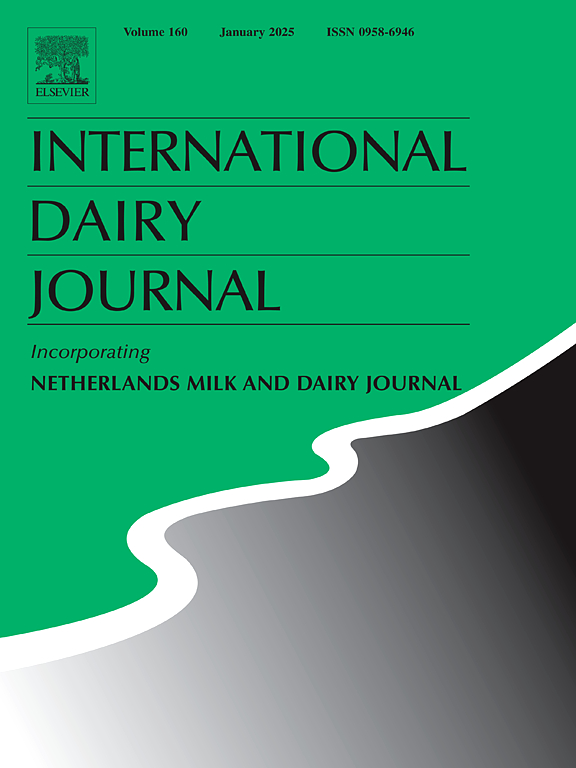Kinetics of Vitamin C degradation and browning index of enriched heat-treated yogurt milk
IF 3.4
3区 农林科学
Q2 FOOD SCIENCE & TECHNOLOGY
引用次数: 0
Abstract
The dairy industry has been developing products enriched with vitamin C, mainly yogurts, to meet consumer demand for products associated with improved immunity. However, its potential degradation before the end of the shelf life could provide the consumer with a vitamin content different from what is stated on the label, in addition to amplifying browning phenomena. To test this hypothesis, this study aimed to determine the degradation kinetics of vitamin C in yogurt and correlate its degradation with browning reactions. High-performance liquid chromatography (HPLC) was used to quantify vitamin C and markers of the Maillard reaction (MR). Vitamin C was monitored over a 21-day storage period at 7 ± 2 °C, and a first-order reaction kinetic model best described its decrease. A loss of 73.9 %–78.7 % of vitamin C was observed, along with an intensification of the browning reaction by the end of the storage period.

强化热处理酸奶乳维生素C降解动力学及褐变指数
乳制品行业一直在开发富含维生素C的产品,主要是酸奶,以满足消费者对提高免疫力产品的需求。然而,在保质期结束之前,其潜在的降解可能会为消费者提供与标签上所述不同的维生素含量,此外还会放大褐变现象。为了验证这一假设,本研究旨在确定酸奶中维生素C的降解动力学,并将其降解与褐变反应联系起来。采用高效液相色谱法(HPLC)对维生素C和美拉德反应(MR)标志物进行定量分析。在7±2°C条件下对维生素C进行了21天的监测,一级反应动力学模型最能描述维生素C的减少。观察到维生素C的损失为73.9% - 78.7%,同时在储藏期结束时褐变反应加剧。
本文章由计算机程序翻译,如有差异,请以英文原文为准。
求助全文
约1分钟内获得全文
求助全文
来源期刊

International Dairy Journal
工程技术-食品科技
CiteScore
6.50
自引率
9.70%
发文量
200
审稿时长
49 days
期刊介绍:
The International Dairy Journal publishes significant advancements in dairy science and technology in the form of research articles and critical reviews that are of relevance to the broader international dairy community. Within this scope, research on the science and technology of milk and dairy products and the nutritional and health aspects of dairy foods are included; the journal pays particular attention to applied research and its interface with the dairy industry.
The journal''s coverage includes the following, where directly applicable to dairy science and technology:
• Chemistry and physico-chemical properties of milk constituents
• Microbiology, food safety, enzymology, biotechnology
• Processing and engineering
• Emulsion science, food structure, and texture
• Raw material quality and effect on relevant products
• Flavour and off-flavour development
• Technological functionality and applications of dairy ingredients
• Sensory and consumer sciences
• Nutrition and substantiation of human health implications of milk components or dairy products
International Dairy Journal does not publish papers related to milk production, animal health and other aspects of on-farm milk production unless there is a clear relationship to dairy technology, human health or final product quality.
 求助内容:
求助内容: 应助结果提醒方式:
应助结果提醒方式:


